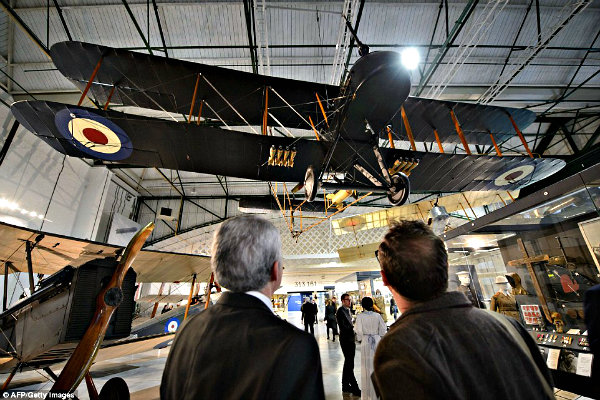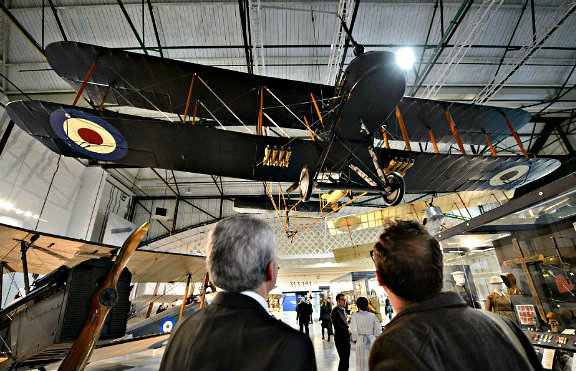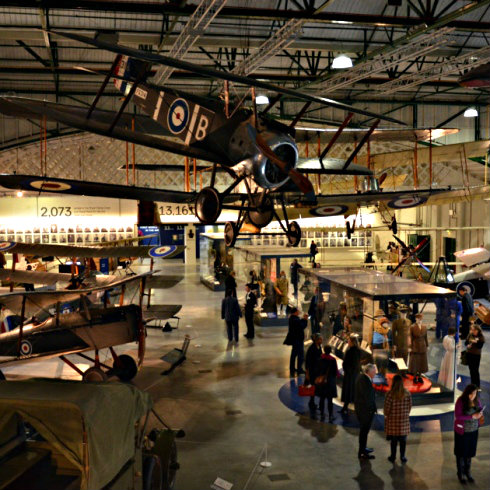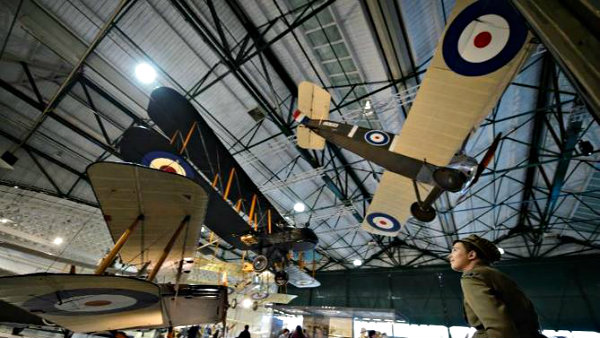The Duke of Edinburgh, Prince Philip, officially opened RAF Museum’s “First World War in the Air” exhibit which puts emphasis on the role and development of aviation throughout the Great War.
The “First World War in the Air” exhibit puts on display about fourteen planes from both the warring sides — the Allies and that of the Germans. Its goal is to look at the role the Great War had in advancing the field of aviation. Among the aircraft displayed in the RAF Museum for the said exhibit is a rare British FE2b night bomber which took two years to reconstruct.
Aside from the war planes used during the First World War, other items tied to the early years of using flight during the war are also displayed for the “First World War in the Air” presentation. There’s the rudimentary flight simulator, a balloon basket which was used for surveying what was behind the enemy lines, a steel bomb shelter, a shortwave tuner which was used to receive Morse code and more.
The “First World War in the Air” is a permanent exhibit and is being housed in a former aircraft factory. It is opened in time of First World War’s centenary as a form of commemoration of the said battle.
According to Ross Mahoney, an aviation historian, the significance of the “First World War in the Air” lies in the vitality of aviation development during the Great War. He pointed out that though having air power did not mean winning the war, it made it less difficult, nonetheless.
“First World War in the Air”: The Changes Aviation Brought to the Great War
RAF Museum’s “First World War in the Air” maps aviation’s evolution through the years — between 1909 when the first crossing of the English Channel took place to 1919 when the Atlantic Crossing occurred. Additionally, it shows how the WWI conflict, occurring between 1914 to 1918, advanced aviation engineering.
As written in the annals of history, there were less than 250 planes built in Britain during the outbreak of the Great War, in 1914. But, when 1918 rolled in, the number of planes produced in the country significantly increased to over 600 being built in a week. The Hendon Factory, where the RAF Museum in London is housed, played a key part in the planes’ production during those times.
One of the most iconic planes in the “First World War in the Air” presentation is the Sopwith Camel. It is suspended opposite to the Fokker D VII, one of the strongest war crafts of the Germans in the WWI-era. The placement of both planes is symbolical as according to Ian Thirsk, RAF Museum’s head of collections, they wanted to present the two sides of the war — that of the Allies and of the Germans.
Other than that, the exhibit was also their chance at showing off some of the museum’s rare aircraft collections, he added.
Uniforms and medals on display at the “First World War in the Air” exhibit also tell stories beyond the planes — to the ones who flew and controlled them. The exhibit not only highlights the stories of the pilots but the staff supporting them on the ground as well. There are narratives included in the display like the account of Frederick Barber, an air mechanic, who was given a medal for his bravery after he jumped from his plane when its engine failed.
In the “First World War in the Air” exhibit, it can be seen that not only men were involved with aircraft work. There were women as well who worked as welders or who sewed an aircraft’s outer skin made of linen. These people changed the course of the conflict forever, pointed out Karen Whitting, RAF Museum’s director of public.



